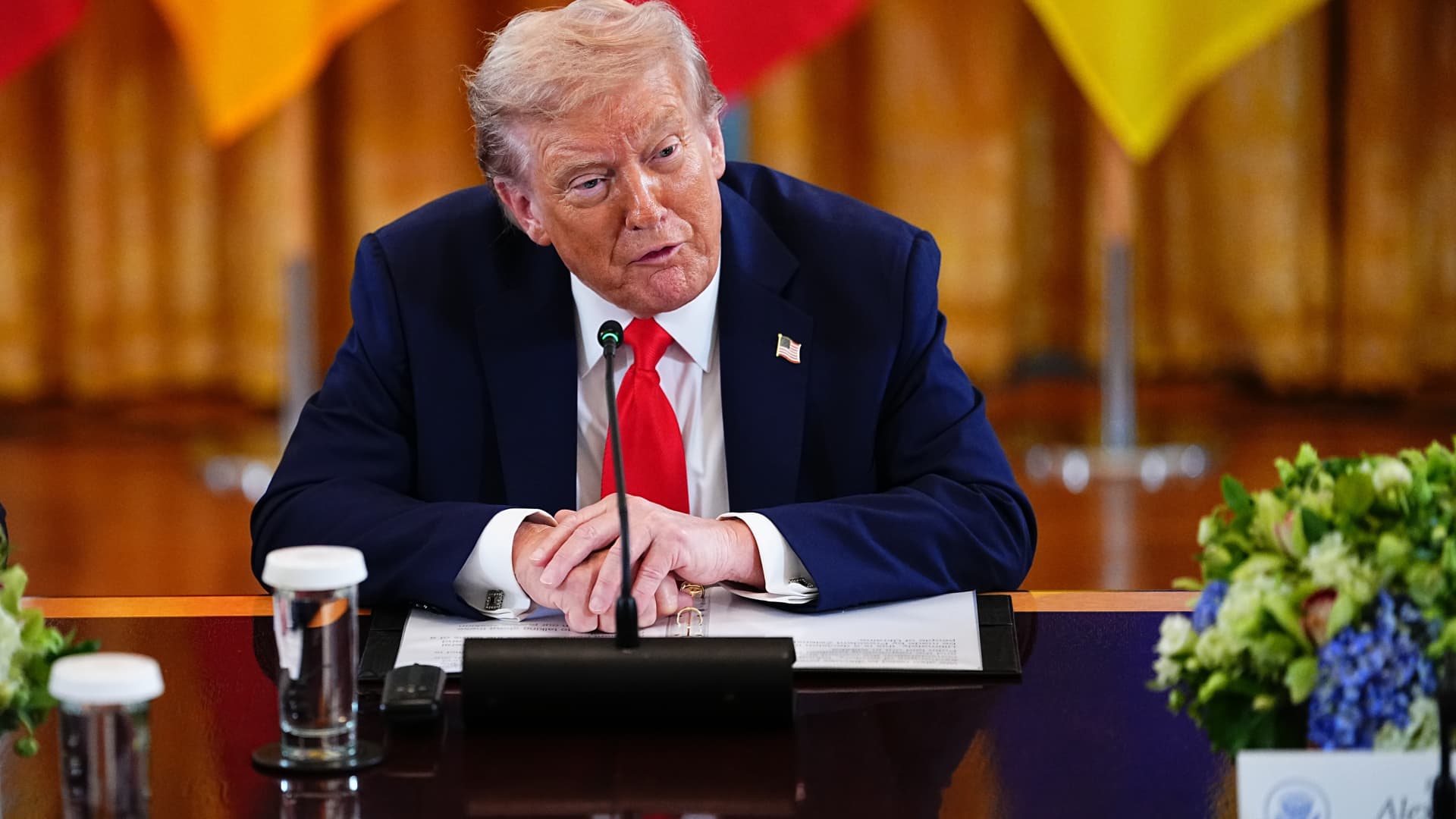
The U.S.-EU deal is here. Europe’s businesses remain on edge
How did your country report this? Share your view in the comments.
Diverging Reports Breakdown
The U.S.-EU deal is here. Europe’s businesses remain on edge
The U.S. and EU shared fresh details on their trade agreement on Thursday. New details include a cap of 15% tariffs on pharmaceuticals, lumber and semiconductors. Autos will face the same rate, but only after the EU makes legislation changes to reduce its industrial duties. However, EU Trade Commissioner Maros Sefcovic on Thursday suggested the framework was just the beginning, leaving the door open for future changes to the deal. “A lot of the details remain to be worked out,” Penny Naas, who leads on the German Marshall Fund’s allied strategic competitiveness work, told CNBC, pointing to for example so-called ‘rules of origin’ The deal does not include any enforcement provisions, nor will it be codified by Congress, which means it could change at the direction of the U.s. President.
The U.S. and European Union granted businesses some desperately sought after clarity as they shared fresh details on their trade agreement on Thursday, but questions remain about whether the deal can really be trusted. Thursday’s update broadly echoed the framework announced by the U.S. and EU in July, which called for 15% tariffs as well as pledges for Brussels to amp up spending and investment in the U.S. New details include a cap of 15% tariffs on pharmaceuticals, lumber and semiconductors. Autos will face the same rate, but only after the EU makes legislation changes to reduce its industrial duties. However, EU Trade Commissioner Maros Sefcovic on Thursday suggested the framework was just the beginning, leaving the door open for future changes to the deal.
Missing details
Despite providing some much-needed clarity, there are still various smaller, yet crucial, aspects missing from the current framework. A muted market reaction from pharmaceuticals on Thursday highlighted investor skepticism and there was no mention of the wine and spirits sector in the deal. “A lot of the details remain to be worked out,” Penny Naas, who leads on the German Marshall Fund’s allied strategic competitiveness work, told CNBC, pointing to for example so-called ‘rules of origin.’
“These rules determine where value is most added to a product that contains multiple parts from multiple countries, and when it can be labeled ‘European’ or ‘American,'” she explained. Naas noted that these rules come into play when it comes to for example transshipments — a process in which goods might originate from one country, but are then sent to another for final shipment to the U.S. Carsten Brzeski, ING’s global head of macro, meanwhile pointed out uncertainties “stemming from formalities and procedures at customs,” which he says are particularly impacting small and medium-sized enterprises. Some companies are already facing issues in this regard, with firms having to “recruit tariff specialists in order to clarify the new customs requirements,” he said.
Another concern is U.S. President Donald Trump’s history of fact-paced changes of heart and policy shifts, Antonio Fatás, professor of economics at the European Institute of Business Administration (INSEAD), told CNBC. The president for example doubled steep steel tariffs overnight, and later quietly expanded their scope. Elsewhere, Switzerland was victim to the president’s erratic decision making, with the country reportedly having been extremely close to a deal, which was then however pulled by Trump as he slapped 39% duties on Swiss exports to the U.S. almost overnight.
watch now
“The real issue for business is how to define a long-term strategy with a country that is no longer a reliable partner,” Fatás said. “What used to be the most reliable partner for Europe has now become one of the most volatile, if not the worst, when it comes to economic policies,” he added. The German Marshall Fund’s Naas also flagged this as a risk for businesses. “This deal does not include any enforcement provisions, nor will it be codified by Congress, which means it could change at the direction of the U.S. President,” she said. Naas pointed to Section 232 tariffs as an example, with Trump having changed tariff rates on some products “at a moment’s notice, and the Administration has expanded the scope to cover other products without warning.”
To trust or not to trust?
Businesses are therefore left with a key question: to trust or not to trust the deal. While Thursday’s statement adds some clarity, the deal “remains fragile and could quickly dissolve,” ING’s Brzeski said in a note after the announcement. “The agreement contains numerous elements that could spark future tensions and escalation. Implementation, monitoring and enforcement of many of the intentions is not always clear,” he added.
Source: https://www.cnbc.com/2025/08/22/the-us-eu-deal-is-here-europes-businesses-remain-on-edge.html
